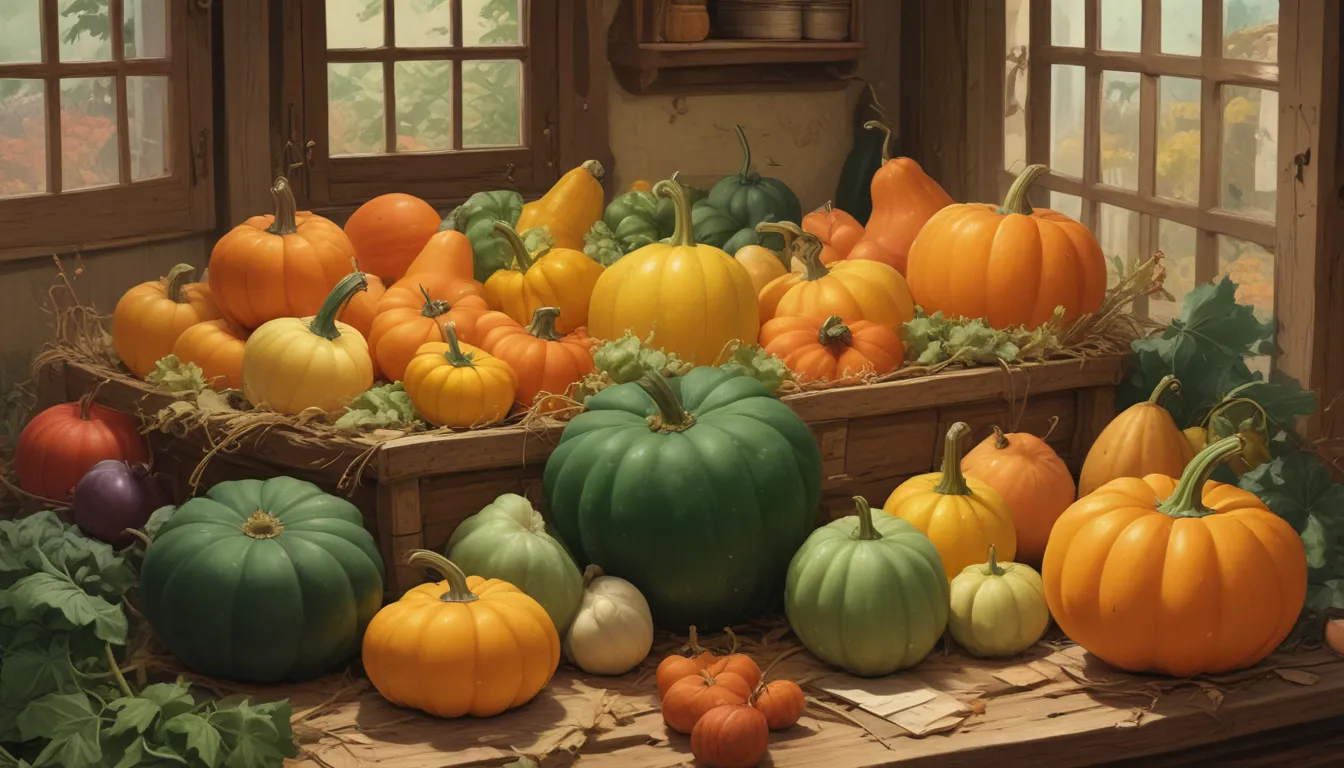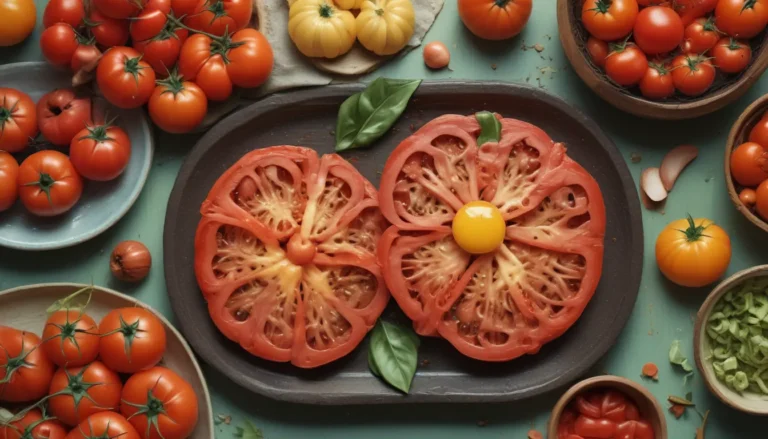A Comprehensive Guide to Growing Winter Squash

If you’re a fan of delicious winter squash and want to try your hand at growing them in your garden, you’ve come to the right place. Winter squash is not only a flavorful addition to your meals but also a great way to save money on your grocery bills. In this detailed guide, we will walk you through everything you need to know about growing winter squash successfully.
Why Winter Squash?
Winter squash is a nutrient-rich vegetable that can be stored easily and provides a variety of essential vitamins and minerals. With its versatile flesh, winter squash can be used in a wide range of recipes, making it a valuable addition to any kitchen.
What You’ll Learn
In this comprehensive guide, we will cover the following topics:
- The Best Cultivars to Grow
- How Many Is Enough?
- The Perfect Plot
- Sowing Smarts
- Routine Maintenance for Plants
- An Ounce of Prevention: Pests and Diseases
- Pollination Among the Vines
- Vine Management
- The Long-Awaited Harvest
- Ways to Use the Extras
- Edible Blossoms
- Other Recipe Ideas
- Pounds and Pounds of Flavor
Let’s dive into the world of winter squash and discover how to successfully grow these delightful vegetables in your garden.
The Best Winter Squash Cultivars to Grow
When it comes to choosing the best winter squash cultivars for your garden, there are several options to consider. Here are some popular choices that provide a broad range of flavors, textures, and colors:
Butternut
- Large peanut-shaped squash with a thin tan skin
- Bright orange flesh with a sweet and nutty flavor
- Ideal for steaming or baking with butter, brown sugar, salt, and pepper
Acorn
- Smaller squash with a mild, sweet flavor
- Ideal for baking and stuffing
- Can feed one or two people per three-pound squash
Kabocha
- Also known as Japanese pumpkin
- Thick skin with fewer edible flesh
- Requires extra space in the garden due to less flesh
Spaghetti
- Pale or vibrant yellow fruit
- Suitable substitute for pasta
- Delicious when prepared with butter, salt, and pepper
In addition to these cultivars, there are other winter squash varieties worth exploring, such as Buttercup, Calabaza, Delicata, Hubbard, Honey nut, and Pumpkin. Each variety has its own unique flavor profile, making them interchangeable in various recipes.
According to Rodale’s Ultimate Encyclopedia of Organic Gardening, winter squash seeds are viable for up to four years if stored properly in a cool, dry place. To maximize your options, consider purchasing a variety of seeds and experimenting with different cultivars each planting season.
How Many Is Enough?
When planning your winter squash garden, it’s essential to consider the space available and the productivity of each plant. While squash vines can cover a significant area, the number of fruits they produce can vary. For example, Acorn squash can yield up to 24 pounds per vine, while Butternut squash typically produces around six pounds.
To maximize your harvest in limited space, focus on nurturing the most productive plants and providing optimal care throughout the growing season.
The Perfect Plot
Winter squash are traditionally grown in hills or at the edge of the garden to allow for sprawling growth. When selecting a location for your squash plants, consider proximity to watering and access to full sun. Creating mounds of dirt using a hoe or small spade can provide the ideal growing environment for winter squash.
Ensure your soil has a pH range of 5.8-7.0 and is rich in humus with good drainage to support healthy squash growth. Adding compost to each hill base can provide additional nutrients to the plants throughout the growing season.
When preparing your garden plot, space your bush-type plants 4-6 feet apart and your vining varieties 8-10 feet apart. This spacing allows room for the plants to grow and spread while maximizing sunlight exposure and airflow.
Sowing Smarts
Winter squash seeds require 70-100 days to mature, depending on the variety and weather conditions. Consider starting your seeds indoors in peat pots before transplanting them into the garden. Starting seeds indoors can reduce stress on seedlings and ensure a healthy start to the growing season.
If planting seeds directly in the garden after the last frost, sow them about one inch deep in groups of two or three per hill. Thin to one plant per hill after germination to promote strong growth and productive fruiting.
Mulching around seedlings can help suppress weeds and retain moisture in the soil. Regular watering, especially during hot days, is essential for healthy plant growth. Avoid watering the leaves and vines to prevent powdery mildew and other diseases.
Routine Maintenance for Winter Squash Plants
Once your squash seedlings reach 3-4 inches tall, mulch around them to maintain soil moisture and suppress weeds. Provide regular watering during hot days and consider adding fertilizer every two to three weeks for optimal plant growth.
Keep an eye out for pests and diseases throughout the growing season and take preventive measures to protect your plants. Squash are susceptible to various pests, including squash bugs and cucumber beetles, as well as diseases like powdery mildew.
To prevent powdery mildew, keep water off the leaves and vines and ensure the soil remains moist but not saturated. Consider using organic pesticides or companion planting with radishes to deter pests and promote healthy plant growth.
An Ounce of Prevention
Maintaining healthy soil and monitoring for pests and diseases are essential preventive measures for successful winter squash cultivation. Consider using floating row covers, organic pesticides, and companion planting to protect your plants from common pests and diseases.
Regularly inspect your vines for signs of damage or infestation and take immediate action to address any issues. By implementing preventive measures and vigilant monitoring, you can protect your winter squash plants and ensure a successful harvest.
Pollination Among the Vines
When it comes to pollinating your winter squash plants, it’s essential to ensure proper fertilization to produce full-size fruits. If natural pollinators are scarce in your area, consider hand-pollinating your squash blossoms to boost fruit production.
Male squash flowers usually appear first, followed by female flowers with a bulge between the blossom and stem. To hand-pollinate your squash plants, carefully transfer pollen from male flowers to female flowers to promote fertilization and fruit development.
While hand-pollination is not always necessary, it can increase your squash harvest, especially in urban areas where pollinators may be limited. By taking a proactive approach to pollination, you can maximize fruit production and harvest quality winter squash.
Vine Management
As your winter squash plants grow, proper vine management is essential to maintain plant health and fruit production. Prune vines to encourage fruit growth and remove excess runners to prevent overcrowding.
Squash plants typically have two main vines that produce secondary vines with fruit. Remove tertiary vines to prevent disease spread and focus plant energy on producing high-quality fruit.
Handle vines carefully, especially when wet, to prevent damage or disease transmission. Prune foliage around fruits to ensure they receive adequate sunlight for optimal growth and development.
The Long-Awaited Harvest
Knowing when to harvest your winter squash is crucial for preserving flavor and quality. Wait until the skin is hard and you can’t press your thumbnail into the fruit before harvesting. Clip fruits from the vine and allow them to cure in the field or a sunny location for one to two weeks before storage.
Store harvested squash at 55-61°F in a dry space to prevent spoilage and maintain quality. Avoid washing squash before storage and handle them by the body rather than the stem to prevent damage.
Properly cured and stored winter squash can last for three to six months in a cellar or pantry, providing a convenient and nutritious ingredient for your meals throughout the winter.
Ways to Use the Extras
If you find yourself with an abundance of winter squash, there are plenty of creative ways to enjoy and preserve them. Share extras with friends and neighbors, freeze, pressure can, or incorporate them into a variety of dishes from soups to desserts.
Winter squash seeds can also be roasted for a crunchy, protein-packed snack or added to trail mixes and granolas. Explore different recipes and preparation methods to make the most of your winter squash harvest and enjoy a flavorful bounty throughout the season.
Edible Blossoms
Winter squash flowers are not only beautiful but also edible and delicious. Harvest male blossoms midday and prepare them by stuffing with herbs, cheese, and other flavorful ingredients.
Store fresh blossoms in ice water in the refrigerator until ready to use, then wash and prepare them for a delightful culinary experience. Experiment with different stuffing and preparation methods to create a tasty and visually appealing dish with winter squash blossoms.
Other Recipe Ideas
Winter squash recipes are versatile and delicious, offering a wide range of flavor combinations and culinary possibilities. Consider stuffing squash with seasonal fruits and nuts, creating one-pot meals, or preparing pureed squash dishes for a warm and comforting meal.
Explore different recipe adaptations and variations to customize your winter squash dishes and delight your taste buds with flavorful and nutritious meals. From savory entrees to sweet desserts, winter squash offers endless possibilities for creative and satisfying meals.
Pounds and Pounds of Flavor
Growing winter squash is not only a rewarding experience but also a flavorful addition to your meals. With its nutrient-rich flesh and versatile culinary applications, winter squash can provide a bounty of delicious dishes for your family to enjoy.
Whether you’re a seasoned gardener or new to growing winter squash, experimenting with different cultivars and recipes can enhance your gardening and culinary skills. Share your favorite squash preparations and cooking tips in the comments below to inspire fellow gardeners and food enthusiasts.
Conclusion
In conclusion, growing winter squash is a rewarding and worthwhile endeavor that can provide a rich harvest of delicious and nutritious vegetables. By following the tips and guidelines outlined in this comprehensive guide, you can successfully cultivate a vibrant winter squash garden and enjoy the fruits of your labor throughout the season.
From selecting the best cultivars to managing vine growth, preventing pests and diseases, and harvesting and storing your squash, every step of the process contributes to a successful and enjoyable gardening experience. By incorporating winter squash into your garden and meals, you can savor the flavors of the season and create memorable dishes for yourself and your loved ones.
Thank you for joining us on this journey through the world of winter squash. We hope this guide has inspired you to explore the wonderful possibilities of growing and enjoying these delightful vegetables in your own garden. Happy gardening and happy cooking!





